🥳 Micro-Series Ep. #1 Is Out!
Thrilled to announce the release of the first episode of my first micro-series, entitled The Department of Internet Culture (or “D.O.IN.C” for short).
It takes place at an office where all of internet culture (think dance videos, political disinformation, internet bullying) is developed. I’m really excited about it.
Not because it’s good.
But because it could be so much better.
This post is about all the things I did wrong in writing and producing the first 4 episodes of this micro-series (AKA “micro-sodes,” we’ll see if that catches on).
I plan to address why I feel the comedy falls flat, why the story lacks engagement and why the characters aren’t as compelling as they should be.
In other words:
I’m going to tear this thing apart.
With merciless abandon. With cold, objective logic. But, most importantly, with a relentless desire to learn.
And I’m posting it here, in front of my 600+ subscribers, so that all of you can learn alongside me.
Will it be scary? Sure! Painful? Maybe!
But nothing great ever happened without fear and a bit of pain.
In this Episode:
🎬 Production disasters that teach you more than film school - How to learn from dead batteries and scratchy audio
🔍 The brutal self-audit method - How to dissect your own work without mercy (Hint: Ego is the enemy)
🤢 Why "cute" makes me gag - The difference between harmless and hilarious
🎭 The premise problem that kills series before they start - Why falling in love with your concept hurts your characters
💰 The minimum viable failure model - How spending coffee money instead of rent money reduces the pain of failure
🚀 From flop to fix - The specific changes I'm making to turn disaster into rocket fuel
Before We Begin…
Before we dive in, you should watch Episode 1 of D.O.IN.C.: Rage Bait. I promise this isn’t merely a ploy to increase my viewership count.
You’re going to want to watch it. It’ll give you important context and it’s mercifully short:
Failure Is An Option
Failure is the best teacher.
–Unknown
I place great value in personal growth, and I’ve found there’s often way more opportunity to learn - and thereby grow - in failure than in success.
While many people I know have excelled at pursuing - and finding - success, due to my erratic, unstable career path, I have become an expert in failure.
But don’t weep for me.
In the current industry downturn, where thick skin and a willingness to take risks / strike out are essential, this expertise has proven to be a fucking godsend.
I want to make perfectly clear that the purpose of this post is not to fish for sympathy or compliments - neither of which have benefitted my writing career.
The purpose of this post is to encourage you to take more risks and do things where fear of failure would otherwise stop you dead in your tracks.
Because when it comes to creative careers, failure is the only way to succeed.
One of the benefits of the iterative “start small” model - mentioned in my post about the Minimum Viable Creation - is the reduced pressure to get everything right.
The fact that I spent less than my monthly coffee budget and a grand total of 12 hours on all 4 episodes (including writing, production and post) helps assuage my creative ego, whereas if I had spent 6 months and 10,000 dollars, these lessons would have been a lot more painful - and costly.
A Lesson in Alchemy
In the first few episodes of D.O.IN.C, I see lazy character development, first-thought jokes and flimsy storytelling techniques.
But much more than that, I see a crystal clear path to growth.
This is a path available to anyone who’s willing to look inward and acknowledge mistakes fearlessly.
It’s not a direct path, but it’s there if you’re willing to leave your ego at the door. All it takes is a critical eye towards the things that aren’t working - both in the finished product and in the process of making it.
From there, catalyze small failures into lessons and catalyze lessons into growth - both personal and creative.
Sure, it’s easier said than done.
But if I swept my failures under the rug, I would be a hypocrite: Preaching one thing and practicing something entirely different.
By the way, this form of introspection and creative self-improvement is currently in vogue:
recently discussed what he’s learned from failing on Micro-budget films, and Jason Blum just went on The Town with Matthew Belloni to discuss lessons learned from the disappointing release of Blumhouse’s latest: M3gan 2.0.Importantly, he does so without pinning the blame on anyone but himself, and I hope other executives will learn to process their future mistakes with similar courage.
Blum laments that for all of Hollywood’s bluster about learning from its mistakes, after an actual, honest-to-god failure, most people are too embarrassed to publicly discuss the failure at all.
I, on the other hand, have no such reservations.
I’ve fallen on my face so many times that I’m basically immune to creative embarrassment. I stopped trying to keep up appearances long ago, and I’m actually excited to put my creative work under a microscope for the whole world (but let’s be honest: really just a few hundred devotees) to scrutinize.
My Honest Opinion: Most creatives from Film & TV are too precious with their work for honest self-evaluation to materialize.
When someone tells us our baby isn't beautiful, we tend to retreat into our shells - and the inside of a shell is a terrible environment for learning.
How to Become Your Own Worst Critic (In a Good Way)
Okay, but how do you actually do this without dying inside?
Who said anything about not dying inside?
The process itself takes emotional fortitude and intellectual discipline, and like I mentioned: It’s a lot easier if you’re making stuff cheap and fast.
But even if you’ve already spent the time and money, here are some techniques that can help you achieve the required mindset shift.
(Yes, I use emojis gratuitously below. No, that does not mean this was generated by AI).
⏰ Add Time
Put a little time between finishing the work and critiquing it. That time can give you a new perspective on how to make the project better, and also an ability to more objectively analyze the stuff that wasn’t so great.
🦄 Use Your Imagination
Imagine your future self talking about all the lessons you learned from this project and how you applied these learnings to make your next piece even better. Be as specific as possible.
🏗️ Break it Down
It’s a lot more palatable to dissect the dialogue, critique the character development or analyze the aesthetic than it is to evaluate the project as a whole. If you’re eating an elephant - first off, you’re a fucking monster, and second, you gotta eat it one piece at a time. Again - being specific here makes the pill - or the elephant, you horrible, horrible person - a lot easier to swallow. My apologies to any elephants who were offended by this bullet point.
📚 Learn the Right Stuff
Focus your learnings on something specific - what you hope to change in the next iteration. This time around, I focused on learning about the writing / development / production process. That is: I want to understand how I work and how I can make my work better. This is a very “qualitative” approach. After I implement these changes and feel more confident in the work I know I can control, I’ll focus on what’s working (and what’s not) with the audience. This is a more “quantitative” approach: We’ll look at actual metrics, e.g. at what point the audience drops off.
To get that one delivered right to you, be sure you’re subscribed:
🎶 Ac-centuate the Positive
I don’t mean “Focus on what’s good,” although you should do a bit of that too. I mean instead of putting your energy into finding all the things that are terrible about it, instead focus on how you can make each of these things better. One of the best pieces of advice I received by a professional writer was “Pitch solutions, not problems.” And that is super applicable here.
But most importantly:
🥰 Remember that you are not your work.
I’ve fallen into this trap countless times, conflating my self-worth with the quality of the scripts I output. You are a flesh and blood human who does amazing, awe-inspiring things outside of your writing. You’re a friend, a mother, a mentor, a space cadet, an alligator wrestler.
Instead of asking “Why am I bad at this?” instead ask “How could I improve this?”
It’s hard. It takes time to achieve this kind of emotional distance. I’ve been writing for 15 years and it still sucks when people don’t like my stuff.
The sting of embarrassment is horrible and most creatives want to avoid it at all costs, but you know what’s worse?
Looking back at the end of your life and realizing you never accomplished anything meaningful in your career because fear got the better of you.
How’s that for a truth bomb?
Mistakes Were Made (But Only by Me)
Let’s get one thing out of the way:
My cast and crew on this set of micro-sodes of D.O.IN.C. were brilliant. They worked hard, went well beyond the scope of their duties, delivered terrific performances and made the project creatively stronger.
I am beyond proud of the work done by Christine, Ian, Deepak and Shirley. They were so much fun to work with and volunteered their time free of charge just to make something cool.
And make something cool they did!
I aim to analyze my work with as much objectivity as possible, which means evaluating the good and the bad. In that spirit, let’s start with the positive stuff:
What Worked
✅ The Premise Was Established Quickly
It’s hard to set up the premise of a (micro-)series in its first 3 seconds, but we managed to do so via a thoughtful establishing shot as well as a 2.5-second intro card / theme song.
We used naturalistic lighting to give the location a flat office space feel and we chose wardrobe based on a business casual setting. To the extent that we developed the character of Ian (the guy with the mustache), it was as a buttoned-up, type-A employee of the week, hence the three-piece suit vest. He also wore his eyeglasses, which works for the character (though sometimes presented reflection challenges when pointed at an illuminated computer screen).
Takeaways:
Use post production to your advantage. People are accustomed to text titles, which can help orient viewers quickly.
Establishing shots help, and they don’t have to be exterior wide. To get into the story quickly, think carefully about your characters’ entrance, as this shapes audience perception. As a general rule of thumb: When you’re short on time, start wide then go tight. Arthouse features can start with an extreme CU of rays of sunlight cascading across the intertwined fingers of two lovers in gentle embrace, but when your video is 55 seconds long, you ain’t got time for that shit.
✅ Good Visual Identity
It’s really hard to establish a specific and unique visual identity when you’re as constrained for resources as we are. We spent a grand total of $250 on these micro-sodes (almost all of it going to location rental), and spent less than 5 hours on set at the location (including setup and wrap).
Still, our cinematographer Deepak immediately understood the aesthetic we were going for and was able to light the set efficiently to capture that kind of flat overhead lighting feel. I call it “mundane magical realism,” a term borrowed from a past web series pilot I wrote/produced.
Our lighting kit was limited to the four LED video lights I own along with some borrowed stands, and we shot on iPhone in ProRes 422 via the Blackmagic Camera App at 30P instead of 24P to get that “internet video” feel.
Takeaways:
You don’t need fancy camera gear or a huge lighting kit to have a visual identity that’s your own. In fact, if it fits the medium, lower production value can be better suited than a more polished aesthetic. Why do you think our content studio is called “LoFi”?
✅ Solid Performances
Considering the degree to which these characters were developed (that is: Not enough), the actors performed admirably. This is my second or third time acting on camera and I would give myself a solid C+.
Not wonderful, but not cringe-inducing either. Ian got into character pretty readily as well, despite being a 1st Assistant Camera (“focus puller” for the plebes out there) and not an actor.
In our next episode (which releases tomorrow/Thursday, subscribe on YT or IG for more!), Ian gets tearful watching an emotionally-manipulative animal rescue video. It’s a commendable performance and makes me want to use him more in LoFi stuff.
Christine (who is also in Ep. 2) is a hilarious standup comedian and frequent comedy creator on social, so it came as no surprise that she had great instincts and was able to leverage her improv experience to make up funny stuff on the fly.
Takeaways:
Look for creative collaborators in unexpected places. Ian hasn’t done a lot of acting before, but he delivered solid performances on the day.
And as Christine proves, there is so much more talent locked up in social media / UGC than you realize. Particularly in the comedy space, there are a ton of talented people who want to write or perform scripted narrative stuff and aren’t given the opportunity to do so in the meat grinder that is feeding the content machine. Like creatives from traditional media, they just want to tell good stories, and if you find the right ones, they’ll fucking nail it.
Added bonus: Collaborating with people in the UGC space means their following is now your following.
✅ Production Stuff
We moved REALLY FAST and got a ton of footage shot in a relatively short period of time. We were incredibly efficient and almost never shot an angle that didn’t get used in post. We have the shooting process down to a science (minus a couple hiccups which I’ll discuss below).
Takeaways:
In TV and Film, it’s widely accepted that each page of a script equates to about 1 minute of screen time. This online format moves much faster, so you get 1 minute of screen time for every 1.5 pages of scripted material. Also, based on our production processes, early estimates suggest that 1 page of scripted material equates to about 1 hour on set - INCLUDING set up and wrap. Go figure!
What Didn’t Work
❌ Production Stuff
Let’s start with the easiest stuff to pick apart. We are a scrappy team moving fast and we don’t have a ton of resources to make stuff, so there were a few production hiccups that slowed us down on the day or in post production:
🪫 Dead Batteries
As I mentioned, we shot on iPhone 16 Pro and we used a DJI mic receiver connected to two wireless lav mics / transmitters. The DJI receiver has a tiny little built-in battery and the iPhone has an iPhone battery and at some point during the day, we lost power on both things.
Whoops.
That slows down your shoot and is probably not a great look if you’re the one planning it… Charging the receiver and iPhone was relatively quick, but it still took time out of our day and kept everyone there longer than they needed to be.
Takeaways:
Have backup power. I adapted my shooting rig to include a swappable USB battery brick that can power both the phone and the mic receiver all day long.
In general, get creative about all the potential problems you may encounter in the production process. Have a backup camera - even if it’s as rudimentary as “someone else’s iPhone.” Have a backup location in mind if the original one falls through. We recorded audio directly into our iPhone (via DJI receiver) and we recorded backup audio through the transmitters as well. When in doubt, refer to Murphy’s Law: [Given enough time] Everything that can go wrong will go wrong.
🔊 Scratchy Audio
Another oopsie. You can get good quality audio from a $350 mic kit. There are cheaper options available, but I like this one because it’s easy to use and makes it nearly impossible to peak your audio. While of course it’s preferable to have a professional audio mixer on set, this kit has produced solid audio on a budget of $0 (after purchase).
The only problem was that we wanted to hide the mics in our performers’ clothes, and all we had to secure them was gaffer’s tape. That resulted in the mics rubbing against fabric and producing scratchy audio that then took time in post to clean up (as much as I could).
Takeaways:
If using lavs, use these! That’s it. That’s the lesson.
📹 Continuity / Visuals
If you’re not shooting with multiple cameras, continuity can be pretty tough to nail. Sometimes, all it takes for two shots to noticeably “not cut” is one subtle movement - an arm raise or a head turn. The effect is jarring and takes the viewer out of the story.
We shot our reverse shots “dirty” (AKA “over-the-shoulder”) to get a sense of the space. But in the edit, I struggled to make some of the doorway edits due to minute differences in body position or movement.
Takeaways:
If you can, get clean singles. That is to say: No shoulder or body in the foreground. Due to the prevalence of the “one-person back-and-forth”, internet dwellers are accustomed to clean shots, and if doesn’t hurt the story or the cut, there’s no reason to “get dirty.”
That isn’t to say that you should always shoot your shots clean. In certain spaces, it’s going to “feel” wrong to not get a little shoulder or side of the head in the shot. In those cases, be watchful of subtle movements that may not cut together with the reverse.
Oh, and one small thing: Some of our shots were a bit dark when examining them in post. This was not a big deal as I was able to pull up the values without introducing any noticeable noise. But next time, we’ll probably move the exposure a touch to the right on the histogram.
❌ Writing / Story
Now we get into the scary stuff.
This is the type of critical self-analysis that tends to make writers queasy.
It’s one thing to discuss the chaos of a shoot day and explain away the issues that can be chalked up to lack of time or resources.
It’s an entirely different thing to point out fundamental mistakes you made as the writer/creative behind a project.
Each of these issues stings like a fissure in my ass (#RIPJerryStiller), but I’m a fan of ripping the bandaid off, so let’s start with the worst of them:
🐰 It’s “Cute” not “Funny.”
If someone calls my writing “Cute,” my gag reflex is instantly triggered.
I’d much rather someone call my script “Weird,” “Awful,” “Unappealing,” or “Sickening” than “Cute.”
Cute is harmless.
Cute doesn’t affect me.
Cute stands there with its arms out and a dumb smile on its face while the world whizzes by.
I don’t want to be cute. Bunnies are cute. I want to be a tour de fucking force.
As discussed in the last post, laughter takes control of a person’s body and renders them helpless. Cute is passive. Funny is aggressive.
That’s why all the slang for “funny” are so… violent:
“Knock the wind out of them”
“Leave them in stitches”
“That set killed"
“Die laughing"
I’m not an aggressive person. Although, now that I think of it, with all this talk of controlling people’s bodies and knocking the wind out of them, I may have to reevaluate…
In any case, as much as it makes me want to hurl, these D.O.IN.C. episodes can best be described as “Cute.”
The jokes are “fun,” not “funny.” And it’s through no fault of the actors, the DP, or even the director (who was me).
The blame lays squarely at the feet of the writer (who is also me).
Carefully analyzing the first episode (and the other 3 we shot, which are similar in scope and tone), I’m struck by the lessons from UnFunny that I outright ignored while developing these first few episodes.
Takeaways:
Prior to production, review How Not to be UnFunny and make sure that the scripts adhere to the lessons mentioned in that post.
Some of the ignored lessons follow:
🫥 The Characters Lack Specificity
I shake my head at the lack of specificity of the characters in this micro-series.
In these early episodes, characters lack specifics in personality and backstory that would increase their comedic surface area. Ian and Jon are both kind of fast-talking ad-men types. Ian is a touch more Type-A than Jon, but their defining characteristics are largely the same.
Specifics are the “sharp edges” that make characters compelling, and they are conspicuously absent from these first few episodes.
Takeaways:
In the next set of videos, we’re going to dig a little deeper with these characters, find out who they are, what they want, and equip them with specific interests and insecurities. Yes, to distinguish characters, but also to increase their comedic surface area.
🫤 The Attitudes Are Weak
As I said in my last text post - when it comes to comedy:
Attitude is Everything
At best, the attitudes in these first few episodes are very watered down. At worst, they’re nonexistent. And, as we’ve established in the past, without strong character attitudes, you’re leaving laughter on the table.
The surest way to establish tension is to give characters strong goals, and let those goals inform their attitudes entering into a scene.
There’s one passable implementation of attitude here: The relationship that Jon has with Gary - the porn guy at the Department of Internet Culture. Clearly Jon has a history with this guy and is sick of him getting credit for fucking everything.
But it’s not enough to carry the comedy in the scene, mainly because:
The attitude is displaced onto a third party that’s not in this scene.
Takeaways:
Attitude is still everything. Building out character depth will help strengthen attitudes.
Attitude will always be stronger if it’s directed towards another character in the scene. The next D.O.IN.C. thing we do will have not only strong attitudes, but strong attitudes between the characters in the scene.
🩼 Over-Reliance on the Premise
This series follows office workers who develop all culture on the internet.
When I first conceived of it, I was tickled by the premise of office workers who are incredibly proud of these awful things that they’re creating. That’s about as far as I got developing these characters, and that’s a problem.
Because people will always gravitate towards strong, funny characters over a premise, however fun and strange that premise may be.
And – as written in these first episodes – these characters are not strong enough to carry a series, micro or otherwise.
That’s not to say these characters don’t have potential. There’s a spark of personality in each of them. But in order to make them memorable, I need to expand that spark into a fully-realized character.
Premise is fleeting. Character is sustainable.
If you need a visual, here you go, you ungrateful bastard:
Takeaways:
People want a story. And in order to deliver a real, compelling story to them, I have to do better at exploring these characters’ rich internal lives and the relationships they have with each other.
I’m going to start thinking about how the characters would react to different situations such as layoffs at the office or world peace - both of which would be fucking horrible for their livelihoods. What do they feel strongly about? Where is there interpersonal conflict? How do I think about outgrowing the premise?
🥱 Low Stakes
“Stakes” is often cited as the most common and thoroughly eye-rolling note received by writers getting studio notes.
But I couldn’t side less with the writers on this one.
Stakes are the reason that audiences stick around. They want to see characters with strong, internally-motivated goals face stiff resistance from external forces.
The stakes in these first few D.O.IN.C. episodes are low. That’s because these characters are mostly just sharing information instead of attempting to achieve something specific within the scene.
Takeaways:
Same as above. Strengthen characters with specific goals in order to improve the stakes.
Charting My Next Course
So what do I plan to do with this laundry list of takeaways? A few things:
While writing, spend more time with the characters and their interpersonal relationship. Uncover their internal issue and how it ties to the central theme. Illuminate what it is about these characters that draws people to them.
Strengthen characters’ goals - Understand what the characters want long-term and what they’re after on a scene-by-scene basis. Write this stuff down so I can refer to it in the middle of shooting, even if their ‘want’ isn’t explicitly stated.
Heighten the tension between characters and put more obstacles in between characters and their goals. This will organically amp up the comedy.
Lean on different types of comedy. There’s obviously tension between characters and strong character attitudes, but think of ways to expand to visual/physical comedy (of which there was none in this first set of micro-sodes).
Think about more ways things can go wrong in production and adequately prepare for the possibility. Batteries, gear, crew…
Whew! We Made It.
Thank you for sticking with me through this exercise in self-flagellation.
It was so helpful for me to put these learnings down in writing and I’m stoked to apply these lessons to D.O.IN.C.’s next micro-sodes and other series beyond it.
If nothing else, I hope you walk away from this piece with a takeaway of your own:
Failure isn’t the opposite of success – it’s the only way to reach it. Behind every cute joke there’s a lesson in attitude. Behind every weak character, there’s an opportunity to add the sharp edges. Behind every low-stakes scene, there’s a real-time demonstration of the benefits of goals and tension.
This work is meant to be an exploration. It’s meant to challenge your assumptions and light a fire under your ass to make something even better. Pursue it not in spite of your fear, but because of it.
That’s really the only way to grow.
And if we’re not seeking growth, then what the hell’s the point?
Until next time…
Stay tuned,
Jon





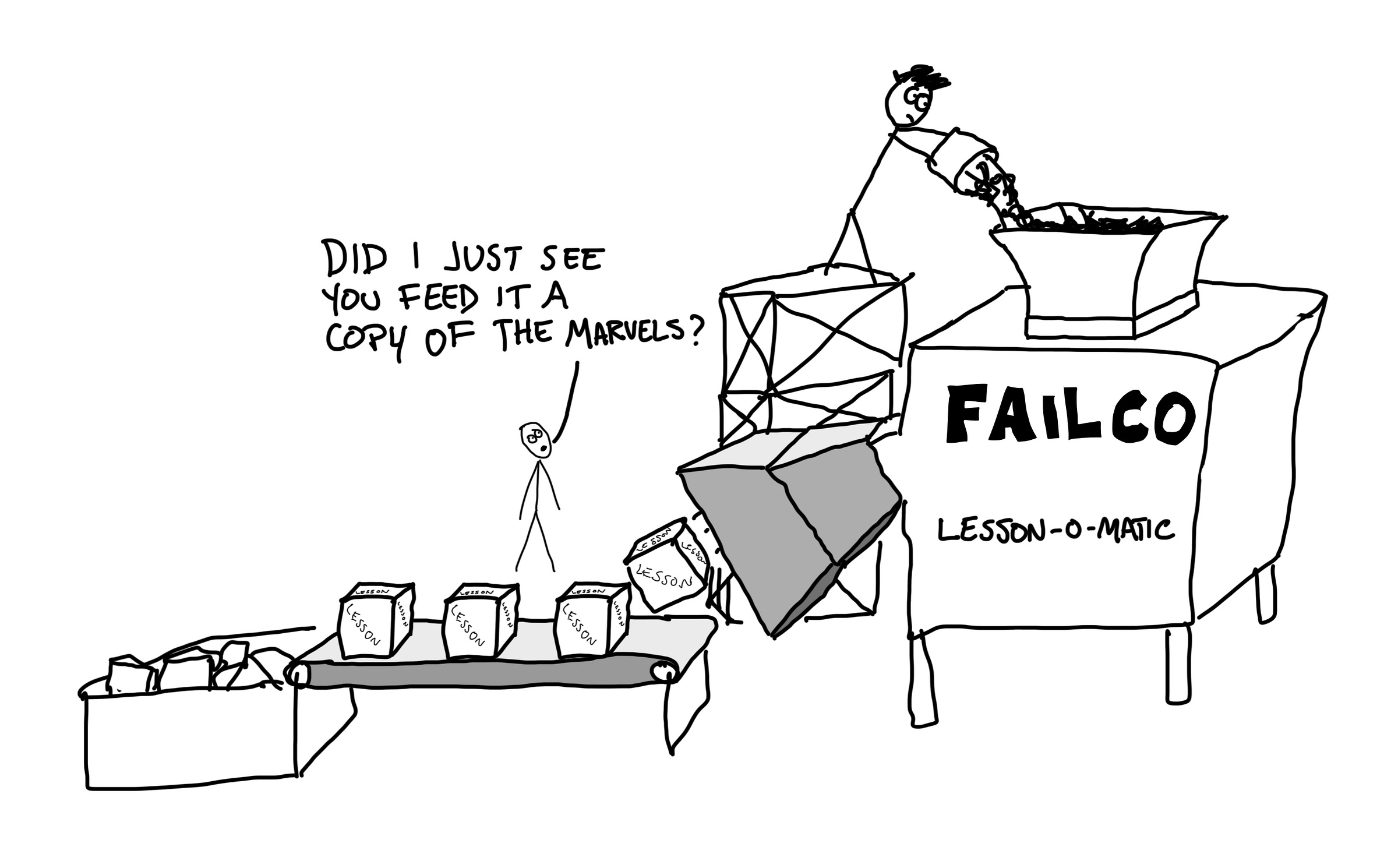
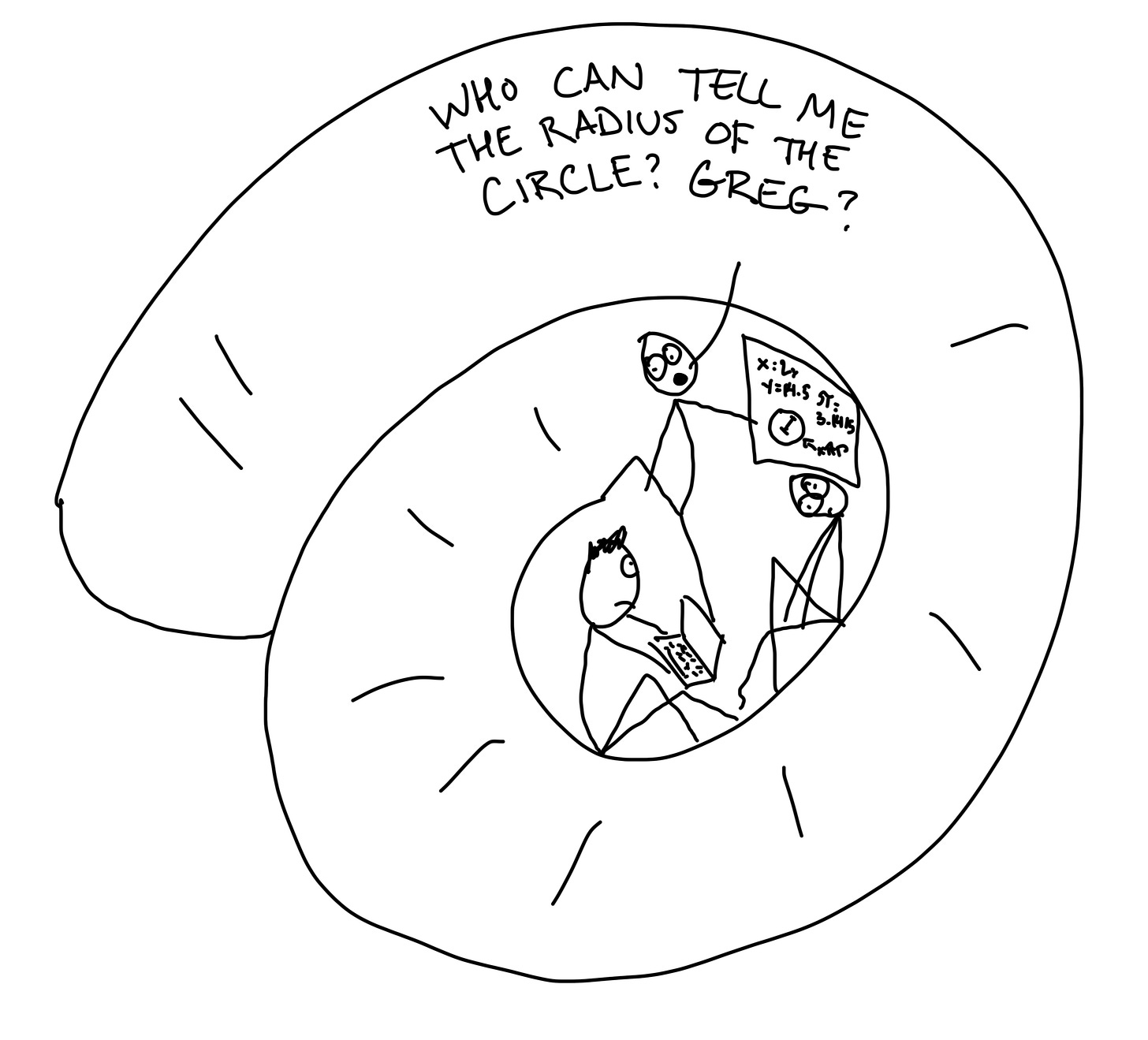
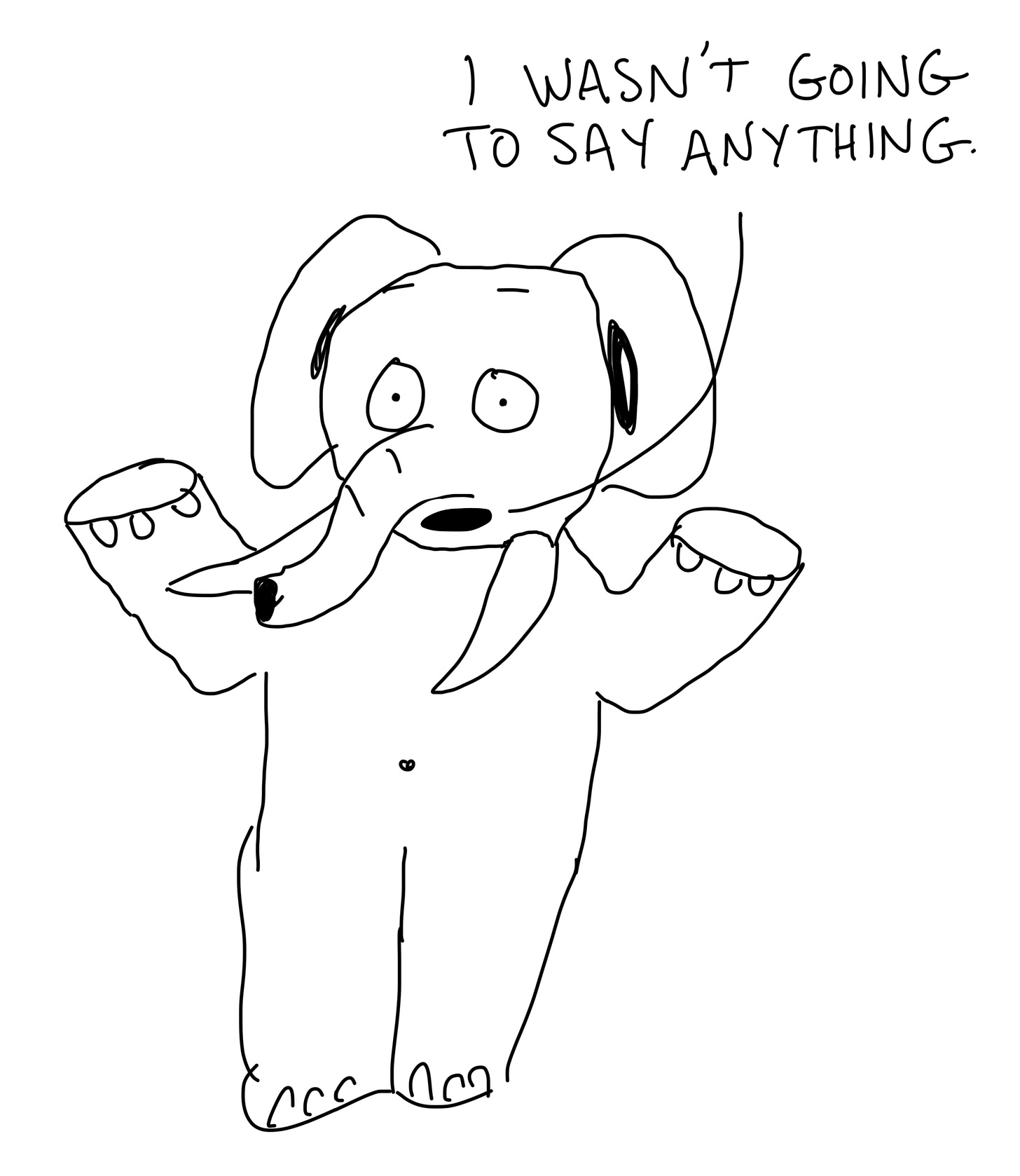
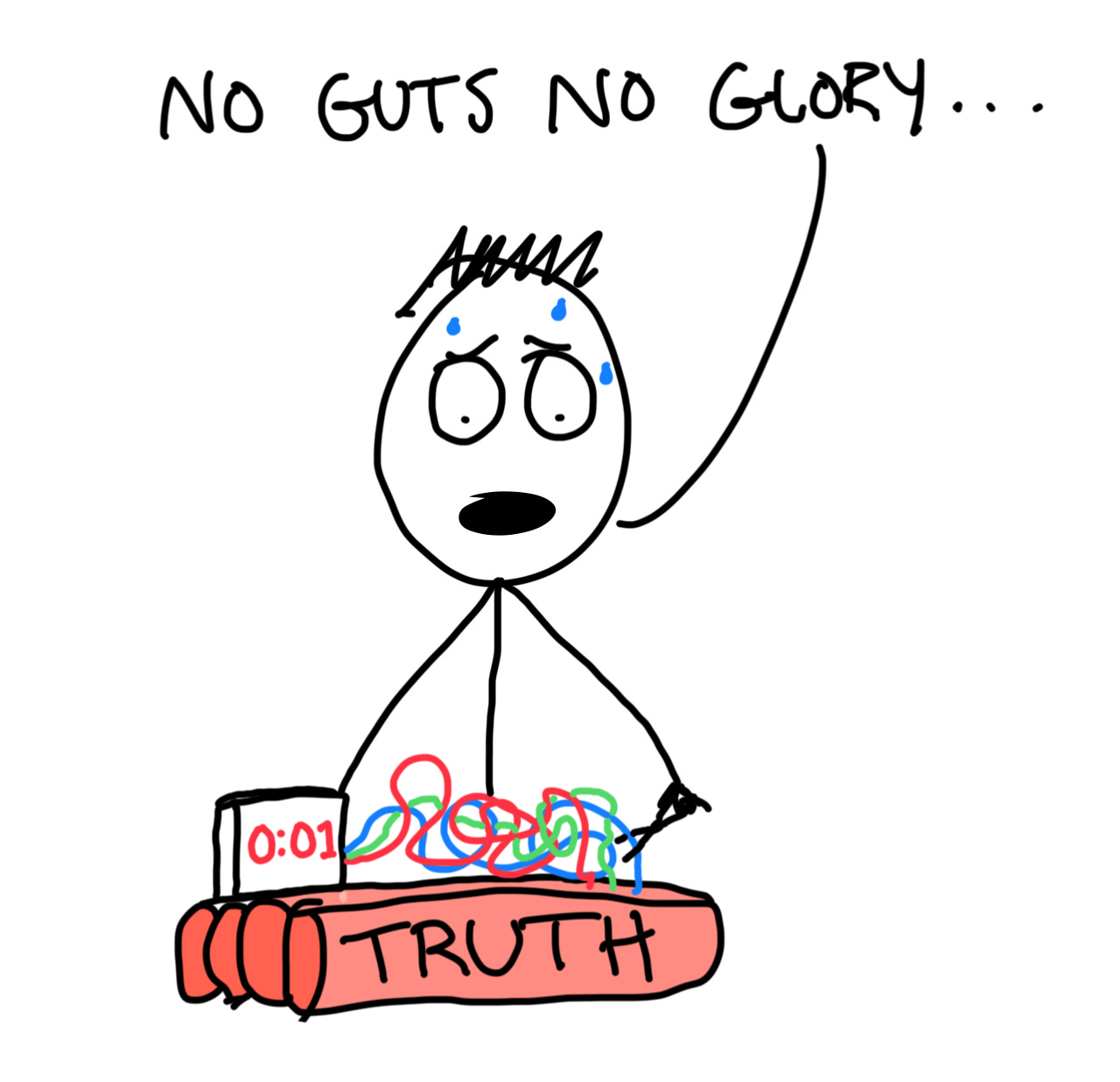
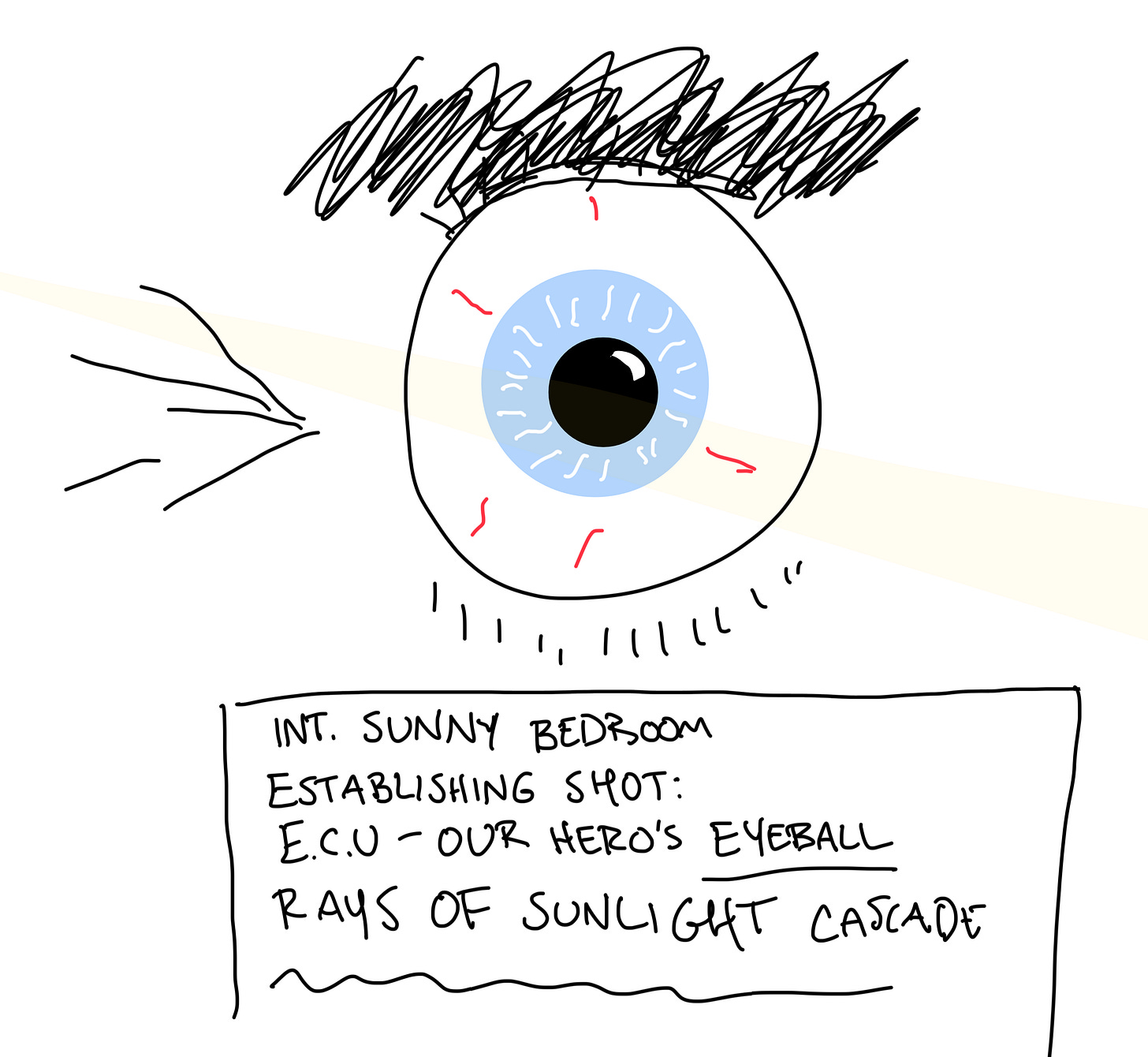
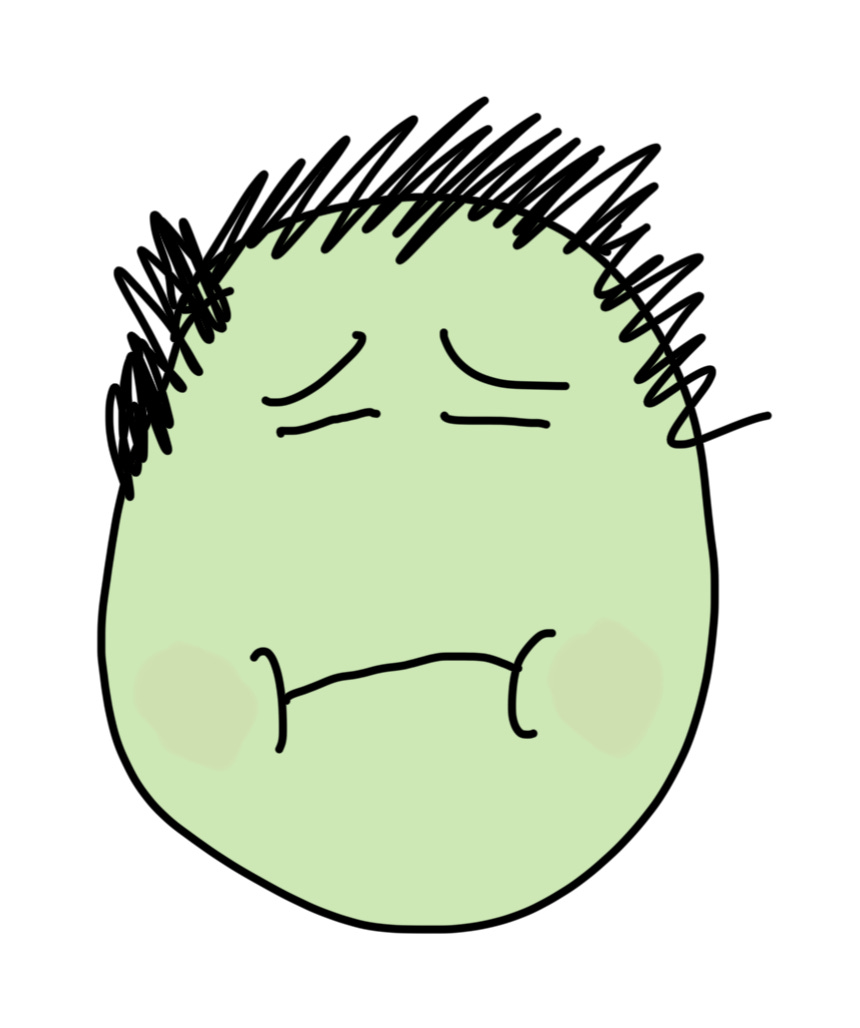
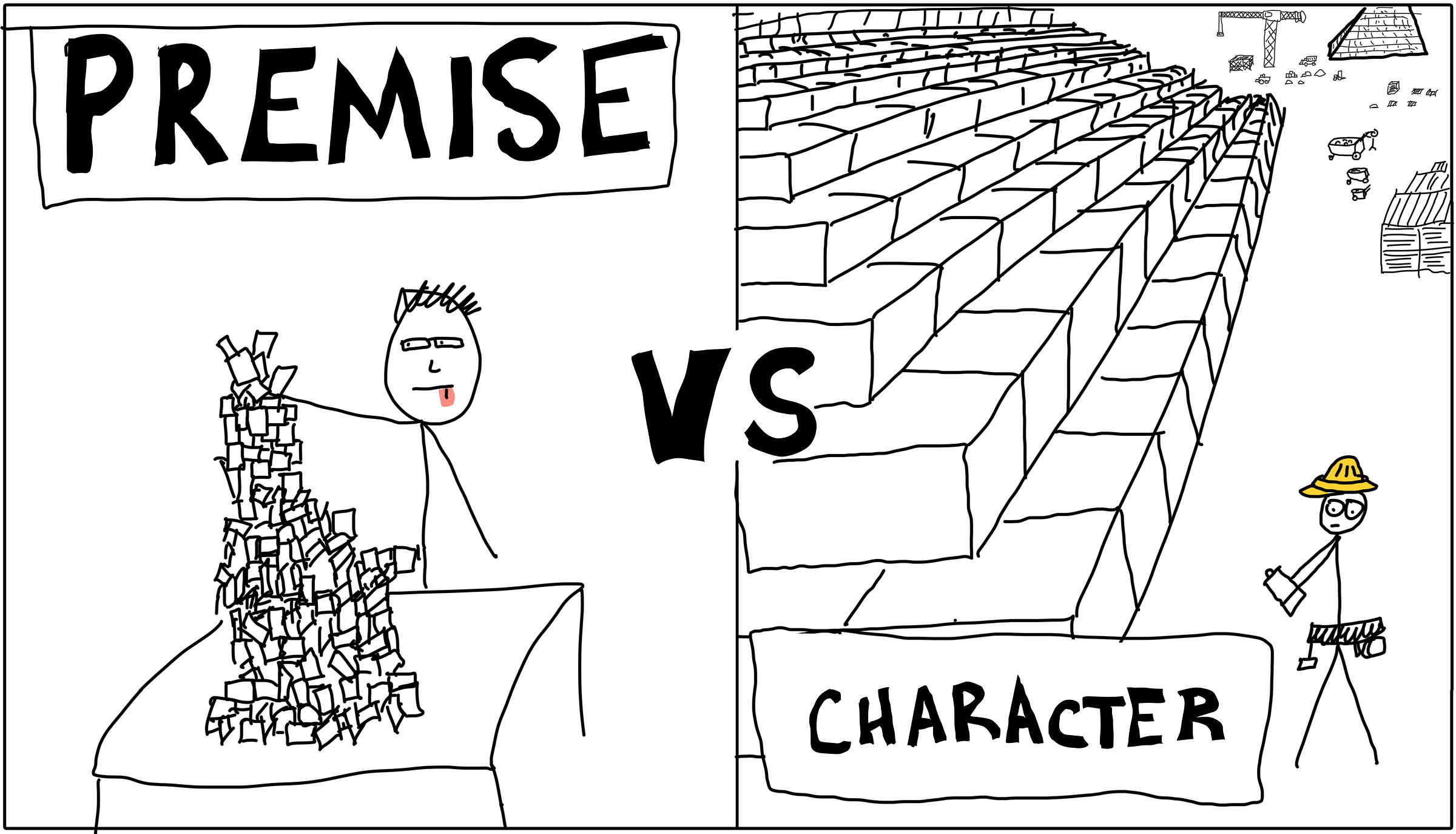
Thanks again for sharing all your knowledge, thinkings, and experiences with micro-series.
Based on one of your previous posts I wrote a micro-series (a comedy nonetheless) and did a table read of it tonight. Turned out better than I thought.
I’ll refer back to this post while I’m going back over the feedback.
Really enjoying the podcast, btw. Thanks again!
loved this thoughtful (and well illustrated) self-analysis and I’m excited to watch/read more !!!